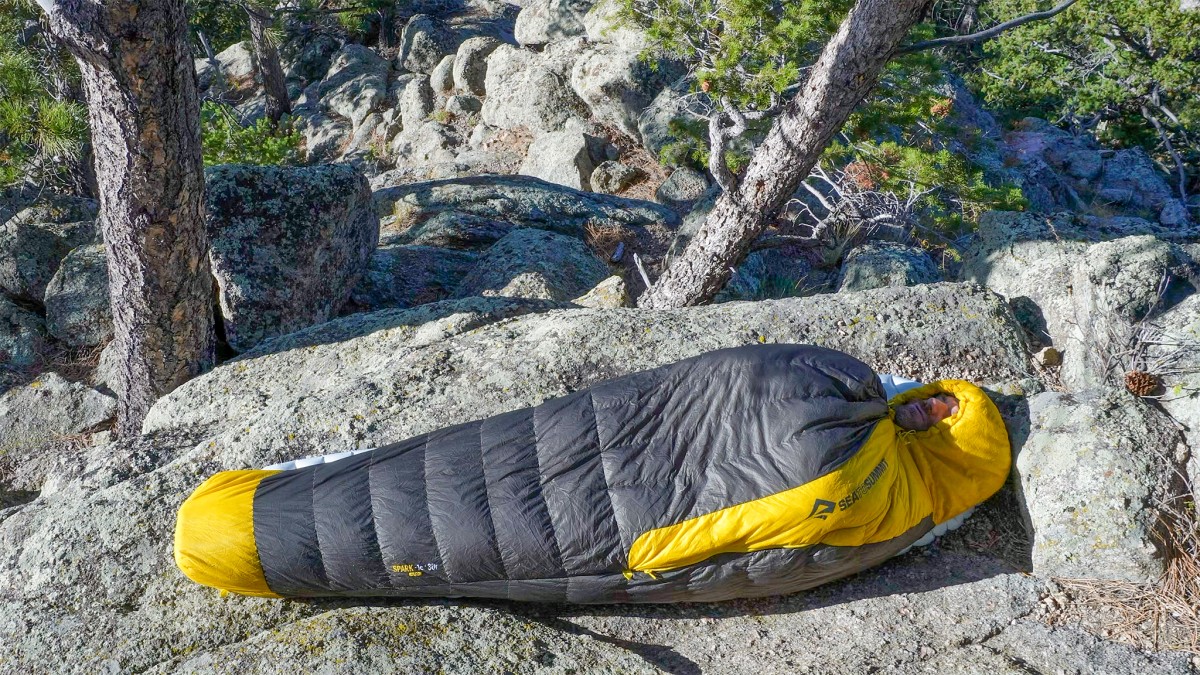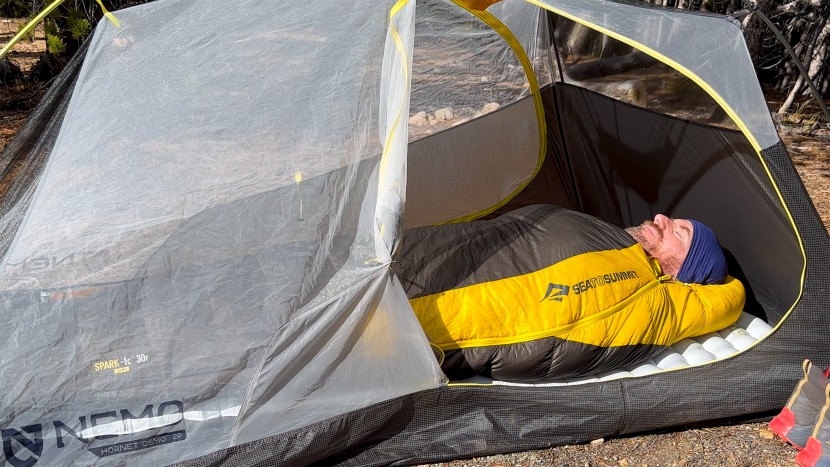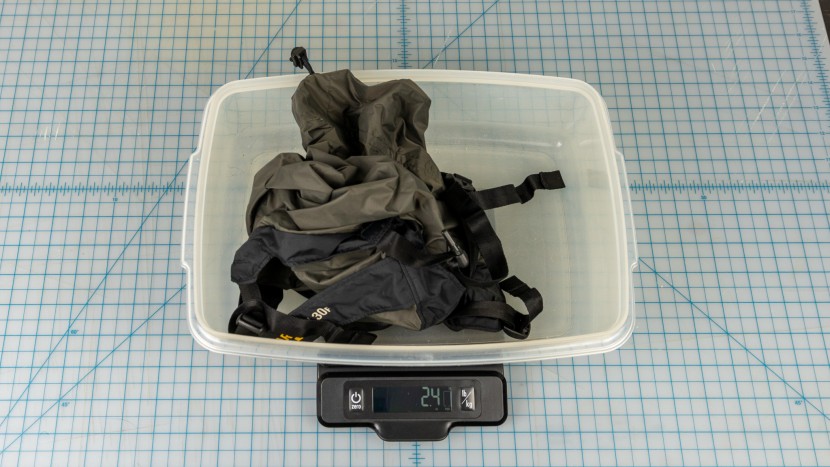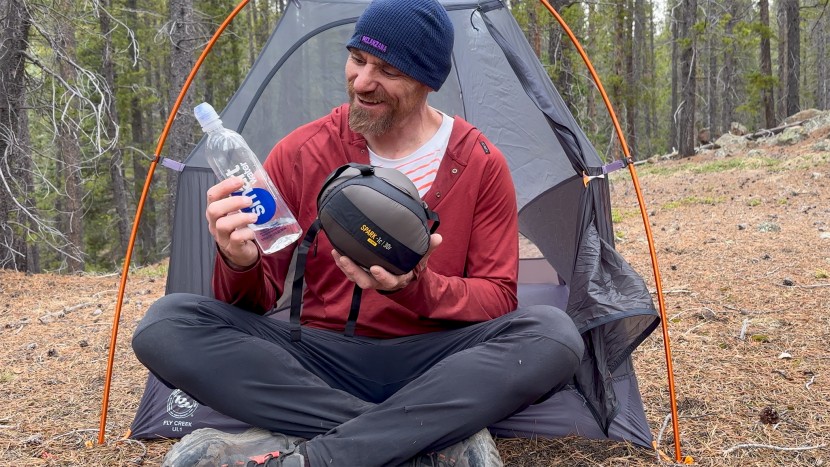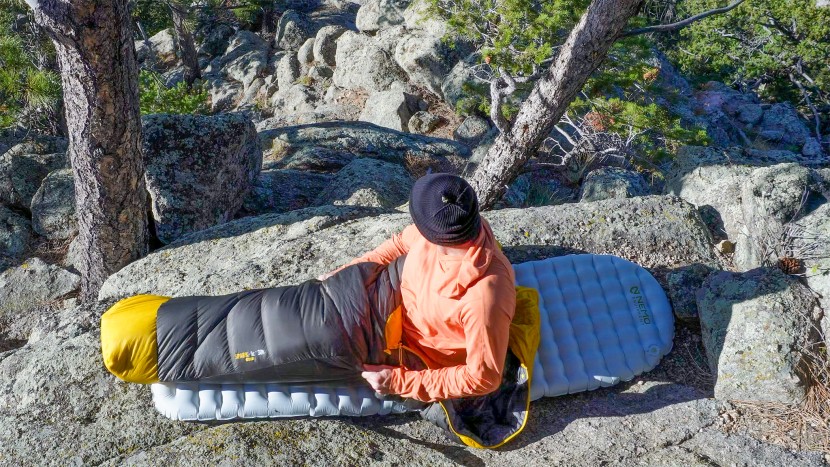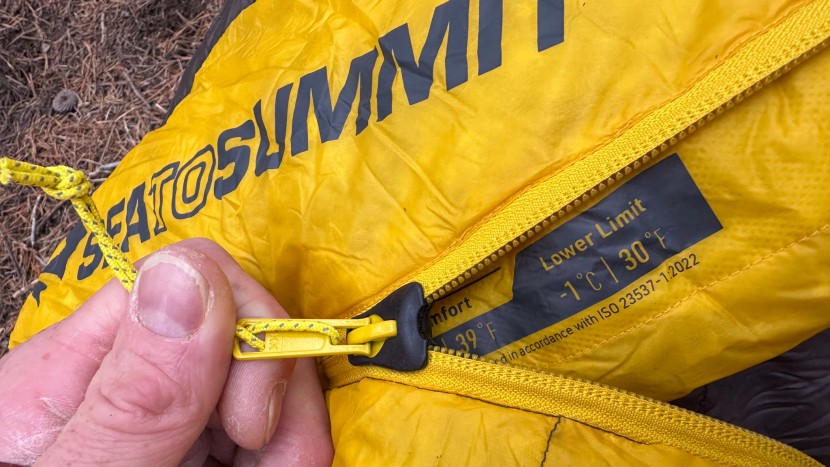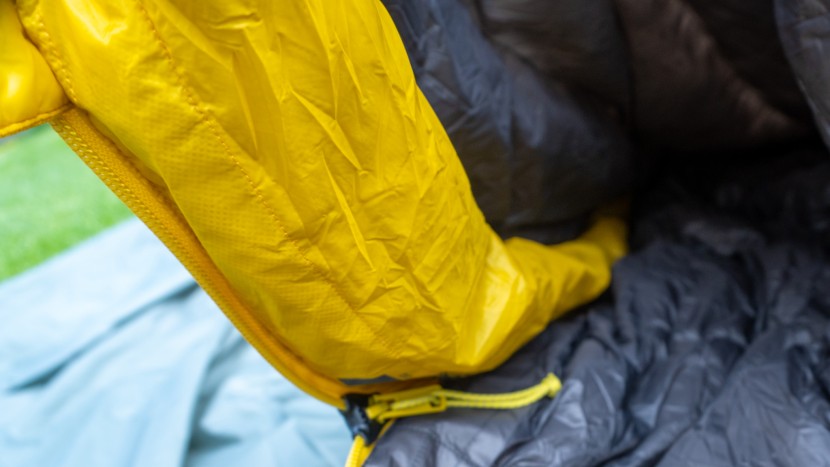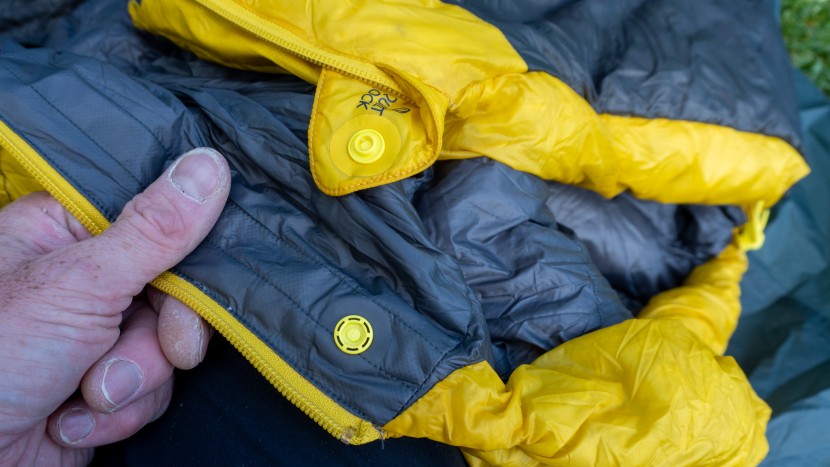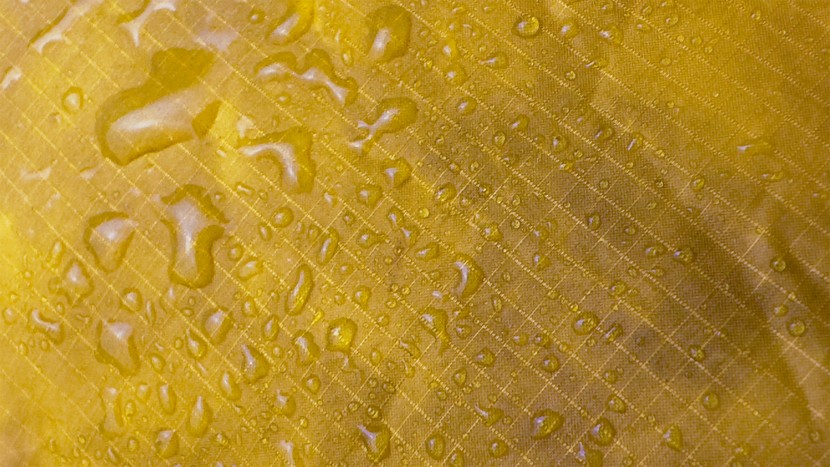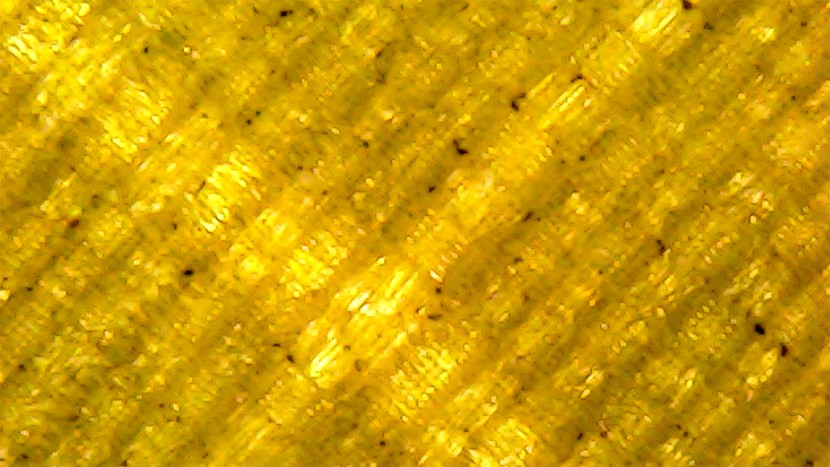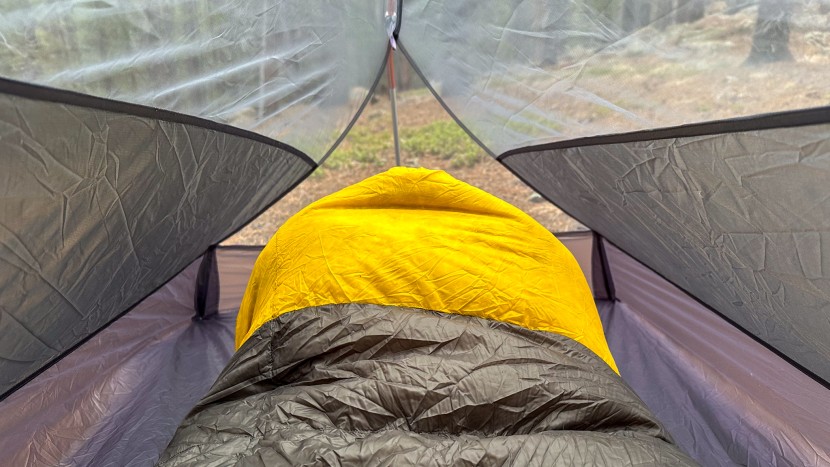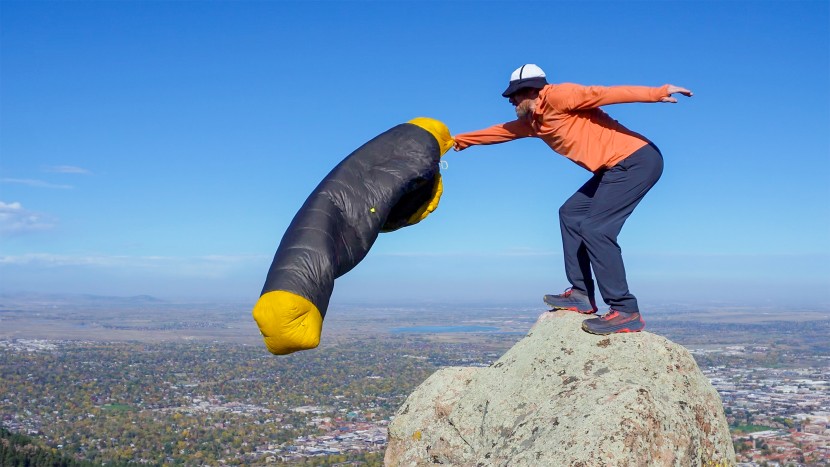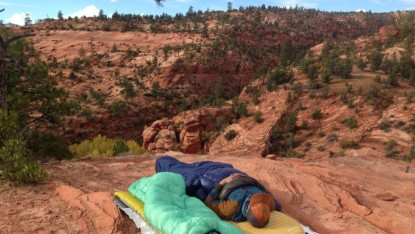Sea to Summit Spark 30 Review

Our Verdict
Our Analysis and Test Results
The Sea to Summit Spark 30 is ideal for hikers who require the lightest sleeping bag without compromising internal volume or comfort. Made with exceptionally high-quality and ethically sourced 850+ goose down wrapped in silk-like 10D DWR-treated nylon, the Sea to Summit Spark 30 achieves a remarkably impressive warmth-to-weight ratio. Use the included compression sack to pack the Spark tightly, making it fit more easily into an already overpacked backpack.
Warmth
The Spark 30 is optimized for more ideal summertime weather, with a certified lab-tested limit rating of 30°F and a comfort rating of 39°F. Our lead tester brought it along on backpacking trips into the Sawatch range of Colorado, sleeping up to 12,000' high on the Collegiate West portion of the Colorado Trail in July, where nighttime lows dipped to near 40°F. This turned out to be very reasonable, and he didn't need to put on any supplementary layers.
The warmth retention of the Spark 30 is courtesy of 9.3 oz of very high-quality, 850+ goose down, which sports a non-PFAS, RDS-certified, Ultra-Dry Down finish. This treatment should help repel moisture and allow the down to retain its heavenly loft, even if you end up covered in condensation. Our overnight heat retention lab tests score it near other bags and quilts that offer similar comfort and limit ratings, as well as fill amounts, giving us confidence that its own ISO-certified ratings are realistic.
If you sleep a little colder, the 30°F limit rating of the Spark 30 may not be the best option; we instead suggest a sleeping bag or quilt with a Limit rating of around 20°F. This will ultimately be a slightly heavier bag, but always remember that the gear you bring should be suited to the conditions you are likely to experience.
Weight
True to its pedigree, the Spark 30 is a bona fide example of a high-quality ultralight bag. From a company whose genesis began from customizing gear for a literal from-the-sea (the Indian Ocean) to-the-summit (of Mt. Everest) trip, products like the Spark 30 continues this legacy of delivering gear for audacious adventures. The total weight on our scale only dipped to 17.0 oz (482 grams) for the sleeping bag alone, though it does come with a stuff sack.
The use of high-quality, 850+ down fill – you'll literally get a certificate of quality from the International Down and Feather Laboratory with your bag – means that less down is needed to attain excellent loft compared to 650 and 700 fill sleeping bags. With 9.3 ounces of down fill, this bag boasts a commendable 54.7% insulation-to-weight ratio, which is particularly notable for a bag with a warmer-weather rating.
The shell and liner are sewn using thin 10D nylon fabric, and features are kept minimal to maximize both weight and packability. This includes a simple cinch strap for the hood and a half-length rather than a full-length zipper. The only superfluous details you may find on the Spark 30 are small snaps to attach the bag to an accessory top quilt – if you want to add a bit of warmth in the winter – and a few small tabs of webbing to make it easier to hang this bag to air dry.
Comfort
Although the Spark 30 is lightweight, the comfort and fit of the bag are still reasonable for people around 6' or shorter (the manufacturer does offer a “long” version for taller people). The shoulder girth diameter is 61", which is larger than that of many other sleeping bags in our lineup. Our lead tester, with broad, rock-climber shoulders, particularly appreciated the extra space, making his nights in the Spark 30 much more comfortable than other, tighter-cut bags he tested. A mix of vertical and horizontal baffles, constructed with both sewn-through and box baffle designs, does a good job of keeping the down evenly distributed around your body.
The ergonomically-shaped foot box is also generous – with a girth of 40", it's also larger than most other bags we tested. As is usually the case in this category, the hood is a little less roomy than conventional sleeping bags, favoring a more minimalist cut, but it's certainly more than serviceable. We loved tightening the hood's cinch strap to wrap all the fluffy down goodness around our head, especially when out cowboy camping. And once tightened, the cinch strap stays naturally out of the way. The half-length zipper slightly reduces the comfort score, as it makes it a little harder to regulate body temperature on warmer nights.
Versatility
Versatility isn't the strong suit of the Spark 30 – given its Comfort rating of 39°F, it's really a dedicated summer bag. But for summertime trips, all of the features are perfectly optimized to keep weight to an absolute minimum, which is the point. This is an ideal sleeping bag for light and fast overnight fastpacking trips, which our lead tester often goes on.
The half-length zipper means you won't be able to unzip the bag to use as a makeshift quilt, and you may miss the benefits of a full-length zipper to maximize thermoregulation. However, we don't expect you to feel too toasty in temperatures above 40°F, and just the half-zipper fully unzipped should provide ample airflow. When it's colder out, the Spark 30 is roomy enough to sleep with extra layers on, unlike other ultralight bags that opt for a tighter cut to shave weight.
Interestingly, the Spark 30 features a pair of snaps that mate with a quilt sold separately by Sea to Summit, allowing you to use this bag well into winter. Colder-rated bags achieve their better warmth ratings by packing more down in their baffles for added loft, which ultimately also adds more weight and packed volume. By creating a quilt “system”, you can purchase the weight-optimized Spark 30 for a summertime bag and add the extra volume of a quilt only when you need it.
Features
The features on the Spark 30 are simple and functional, designed to keep things lightweight. A half-length, #5-sized zipper is found on the left-hand side. The slide body's head meets the track at a wide angle, then guides the opposite sides together to prevent snags. Designers could have chosen a smaller, simpler, and lighter zipper, but we often find that those can jam up and snag on thin fabrics, easily damaging both. We're satisfied with the manufacturer's compromises on the length and size of the zipper.
The minimal hood on the Spark 30 can be cinched down using a strap found on the right side. A snap is also found in this area, allowing you to keep the hood securely around your head while unzipping the zipper down to your waist. On the opposite end, the foot box is ergonomically shaped, allowing you to lie on your back with your toes facing the sky without feeling cramped.
Both the hood and footbox have slightly different fabrics and treatments to make them a little more water-resistant than the rest of the bag, keeping the down in these key areas as dry as possible. This comes into play while sleeping: your tent walls may be building condensation near your head and feet, which can migrate onto your bag if it bumps into them.
Should You Buy the Sea to Summit Spark 30?
If you're seeking a top-tier ultralight summer sleeping bag that's comfortable and roomy enough for a multi-week backpacking trip, the Spark 30 fits the bill. The Spartan use of premium materials, such as its 850+ treated down and 10D face and inner fabrics, is key to its impressive lightweight design. Unlike many other ultralight bags we tested, it's comfortably proportioned, allowing you to relax after a hard day of hiking and melt within the warmth of the bag.
What Other Ultralight Sleeping Bags Should You Consider?
The Western Mountaineering SummerLite is another summer bag with a simple design, but unlike the Spark 30, it does feature a full-length zip, which makes getting in and out easier. If you want a roomier or slightly warmer setup, consider the Zenbivy Ultralight Muscovy 25 Bed. The quilt design, combined with the bed sheet system, aims to make your backcountry sleeping experience feel more like being at home. For even greater weight savings, the Feathered Friends Vireo UL forgoes a zipper and hood entirely, featuring a unique design that includes more down fill at the bottom of the bag than at the top, which is ideal if you plan to sleep in a puffy. This is a bag made for shorter, more extreme trips, whether you're putting down a lot of miles or climbing steep mountaineering routes.


